Do you love spending time outdoors surrounded by the beauty of nature? If so, then you’ll love finding crystals in your backyard! Crystals can be found almost anywhere, and they add a touch of magic to the natural landscape. In this article, we will answer some common questions about finding crystals and provide useful tips to help you get started. So grab your hiking boots and let’s go explore!
Can You Realistically Find Crystals in Your Backyard?
So you’ve decided to hunt for some crystals, that’s great! But is it doable to do it within the limits of your backyard? The short answer is yes! With a little patience, elbow grease, and some basic knowledge, you can absolutely find crystals in your backyard.
However, the type of crystals you’ll find will vary depending on where you live. For example, quartz is one of the most common minerals in the world and can be found in nearly every country. On the other hand, rare minerals like amethyst or citrine are typically only found in certain areas. [1]
That being said, there are still plenty of ways to increase your chances of finding crystals no matter where you live. Here are a few tips:
Do your research
The first step is to learn about the different types of crystals that are out there. Once you have a basic understanding of what you’re looking for, you can start to narrow down your search. For example, if you live in an area with a lot of limestones, it’s likely that you’ll find calcite crystals.
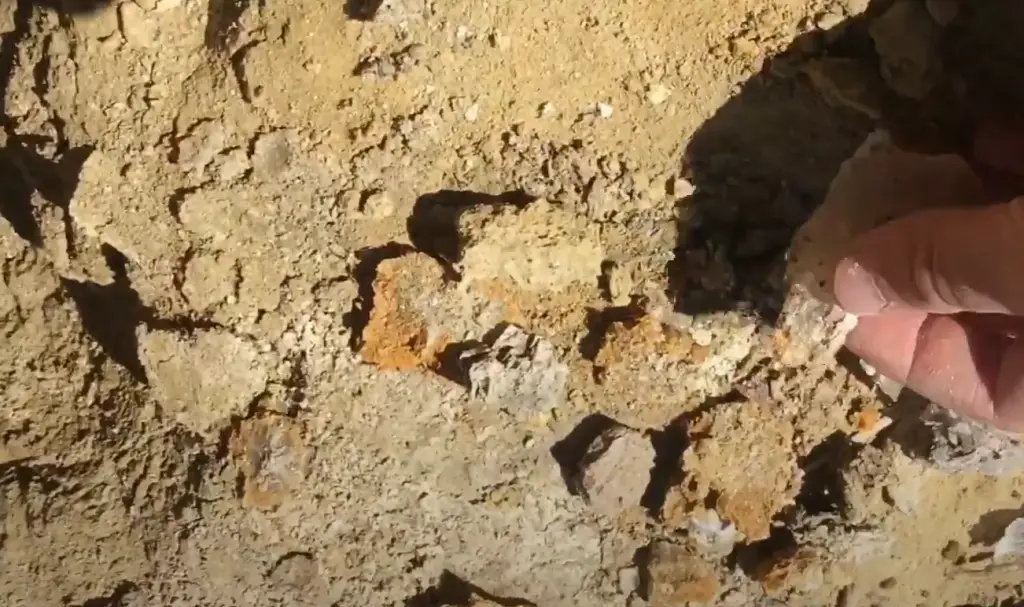
Look in the right places
While it is possible to find some gems in your backyard, these are extremely rare and you won’t find them everywhere. In addition to learning about the types of crystals that are found in your area, it’s also important to research the best places to look for them.
If you have a water source, like a river or spring nearby, that boosts the chances of finding crystals too. Water is necessary for the formation of many minerals, so areas with a lot of water tend to have more crystals. Once you have a general idea, you can start to narrow down your search. Many crystals form in water and are then carried downstream to new areas.
Another good place to look is in areas that have recently been disturbed, such as construction sites or roadcuts. The minerals will often be found near the surface here since they’ve been unearthed by the disturbance.
Finally, you can do your research by joining online forums or Facebook groups dedicated to crystal hunting. This is a great way to connect with other rockhounds in your area and learn about new places to look for crystals.
Get the right equipment
While you don’t need a lot of fancy equipment to find crystals, there are a few things that can make your search easier.
First, you’ll need something to help you dig. A small shovel or trowel will do the trick. You might also want to bring along a pickaxe if you’re planning on searching in areas with a lot of bedrock.
Second, you’ll need something to carry your crystals in. A bucket or mesh bag will work well for this. Make sure whatever you use has holes or is made of breathable material so your crystals don’t get too hot while you’re carrying them around.
Third, while this isn’t a must, a pickaxe can be a helpful tool for breaking up rocks and getting to the crystals inside.
And don’t forget to pack some snacks and water! Crystal hunting can be hard work and you’ll want to stay hydrated and fueled up throughout the day.
Lastly, it’s always helpful to have a magnifying glass with you so you can get a closer look at potential crystals.
We suggest you wear comfortable clothing that you don’t mind getting a little dirty. It’s also important to wear closed-toe shoes for protection. Long pants are also a good idea to avoid any unwanted scratches from plants or thorns.
Be patient
Finding crystals takes time and patience. It’s important to remember that you probably won’t find anything on your first try. But the more you go out and look, the better your chances will be. [1] [2] [3]
Common Crystals You Can Find in Your Backyard
Now that you know where to look and what to look for, let’s take a look at some of the most common crystals you can find in your backyard.
Quartz
One of the most common and popular crystals is quartz. Quartz comes in many different colors, including clear, white, pink, purple, blue, green, and yellow. It’s found all over the world and is relatively easy to find.
Quartz is often used in jewelry and can be polished to a high shine. It’s also a popular choice for crystal healing since it’s said to have numerous benefits.
Amethyst, citrine, and ametrine are all types of quartz that have been colored by impurities. Amethyst is purple, citrine is yellow, and ametrine is a combination of purple and yellow.
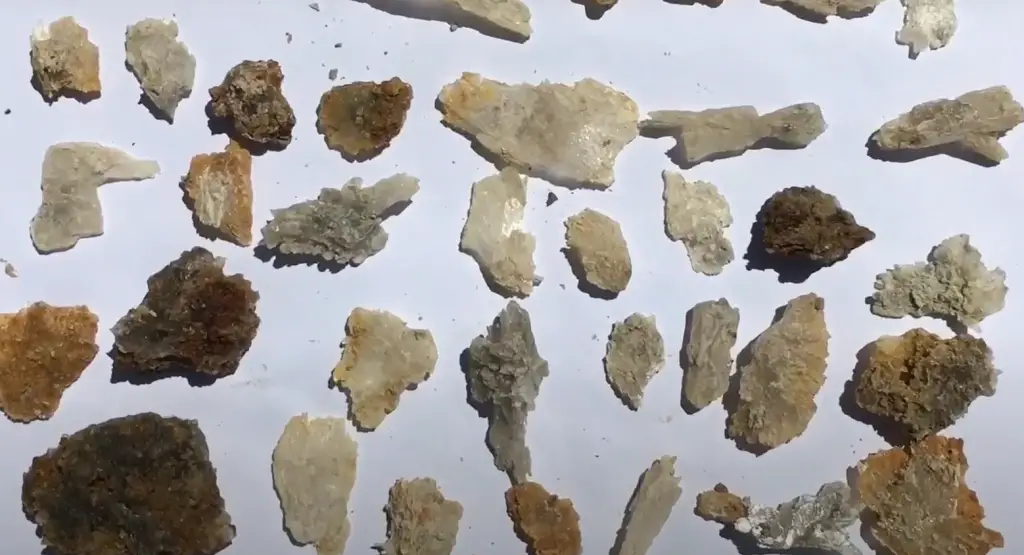
Agate
Agate is a type of chalcedony that is found in a wide variety of colors. It is often used in jewelry and as a decorative stone.
Agate can be found in many different places around the world, but it is especially common in the United States, Brazil, and India. Some of the most popular agates include fire agate, blue lace agate, and banded agate.
Fire agate is a type of agate that contains iron oxide deposits that give it its characteristic red or orange color.
Blue lace agate is a light blue variety of agate that gets its name from its resemblance to lace fabric.
Banded agate is an opaque type of agate that contains bands of different colors. The most common colors are white, black, and gray.
When looking for agates, keep an eye out for rocks with smooth surfaces and interesting patterns. Agates are often translucent, so you might be able to see light passing through them when you hold them up to the sun.
Malachite
Malachite is a green mineral that often forms in banded patterns. It’s found in many different parts of the world, but it’s most commonly associated with Africa. Malachite is often used as a gemstone and it can be polished to produce a beautiful green shine. It’s also sometimes used as an ore for copper.
How to find it: Malachite can be found in areas with exposed bedrock. It’s often found near copper deposits, so look for areas that have a lot of green rocks.
What to look for: Malachite typically has a deep green color with lighter bands running through it. It often forms in massive or botryoidal shapes.
Jade Opal
Jade opal is a type of jasper that is found in many different colors, including green, yellow, and orange. It’s a relatively soft stone, so it’s easy to break open and find crystals inside. Jade opal is used in a variety of jewelry and is also collected by gem enthusiasts. It is found all over the world, but some of the best specimens come from Australia.
Pro Tip: Jade opal is often mistaken for turquoise. If you’re not sure what you’ve found, hold it up to a light and look for inclusions. If you see any, it’s probably jade opal.
Turquoise
Turquoise is a blue-green mineral that is found in many different types of rocks, including sedimentary, metamorphic, and igneous rocks. Turquoise is relatively soft, so it’s often made into jewelry or other decorative objects. It can also be used as a pigment in paints and dyes. If you find a piece of turquoise in your backyard, consider yourself lucky!
When looking for turquoise, keep an eye out for blue-green rocks with a waxy or powdery surface. You’re more likely to find small pieces of turquoise rather than large ones. [1] [2] [3]
How to Find Crystals in Your Backyard
Now that you know about some of the most common crystals you can find in your backyard. It’s time to start looking for them! Here are a few tips to help you get started.
Gather tools
Obviously, you can’t find crystals if you don’t have the proper tools. You will need a few things before you get started. We’ve already covered that. You don’t need much, but the basic tools are a spade or shovel, a pickaxe, and a small sieve.
Unfortunately, metal detectors will be a little bit useless in this activity as most crystals are not magnetic.
If you want to get serious about finding crystals, there are a few other things you can add to your toolkit. For example, a geological hammer will come in handy if you want to break open rocks to see what’s inside. [1] [2]
Find a suitable spot
The next step is to find a spot where you are likely to find crystals. The ideal place is in areas that have a lot of rocks. This could be near a riverbed, on the side of a mountain, or anywhere else where there are lots of rocks.
If you live in an area with lots of forests, you might also want to try looking for crystals in the clearing as this is where rocks are often exposed. Once you have found a suitable spot, it’s time to start digging! [1] [2]
Dig near water sources
Avoid power lines and other areas that might be dangerous
The important thing you need to do is find a safe place to look for crystals. Avoid power lines and other areas where you might get hurt. Stick to open fields and woods where there aren’t any obvious hazards.
Hazards include:
- Cliffs;
- Bodies of water;
- Areas with a lot of traffic;
If you’re not sure if an area is safe, it’s always better to err on the side of caution and find somewhere else to look.
If you’re looking for crystals in a river or stream, be careful not to get swept away by the current. Wear sturdy shoes and avoid slippery rocks.
Pro Tip: Bring a friend with you when you go crystal hunting. Not only will it make the experience more fun, but it’s always good to have someone else around in case of an emergency.
And if you are planning on deep digging, be sure to consult a professional first and get the appropriate permits. The last thing you want is to get in trouble with the law! [1] [2]
Sieve through the dirt
Once you have dug up some dirt, it’s time to start sifting through it. Sifting is the process of removing smaller rocks and debris from an area in order to find hidden crystals. It can be done with a screen, sieve, or even your hands. The best way to sift is to use a gentle back-and-forth motion so you don’t miss any hidden gems!
The best way to do this is to put the dirt into a small sieve and then shake it. This will help to break up any clumps of dirt and make it easier for you to find the crystals.
You might want to use a small paintbrush or toothpick to help loosen up the dirt and make it easier to sift through. [1] [2]
Evaluate the worth of the crystal
Once you have found a crystal, it’s time to evaluate it. The first thing you need to do is identify the type of crystal. This can be done by looking at its shape, color, and hardness.

For example, for quartz, the hardness, size, and clarity are the most important factors. For amethyst, on the other hand, color is the most important factor.
Once you have determined the worth of your crystal, it’s time to add it to your collection! [3]
FAQ
How many crystals are worth?
This is a great question, and unfortunately, there is no easy answer. The value of crystals can vary greatly depending on the type of crystal, where it came from, and who is buying it. For example, a piece of common quartz might be worth only a few dollars, while a rarer crystal like amethyst could be worth hundreds or even thousands of dollars.
Where crystals can be found?
There are many different types of crystals that can be found in a variety of locations. Some of the most common places to find crystals are in sedimentary rock, such as sandstone or shale. Other common sources for crystals include metamorphic rocks, such as quartzite or marble, and igneous rocks, such as granite or obsidian.
In addition to being found in nature, crystals can also be man-made. Synthetic (or man-made) crystals are created in laboratories and have the same chemical composition as natural crystals, but their atoms are arranged in a more orderly fashion.
What is the easiest crystal to find?
The easiest crystal to find is quartz. You can find it in many different colors, including clear, white, pink, blue, and green. It is found all over the world and is very common in sedimentary rocks like sandstone.
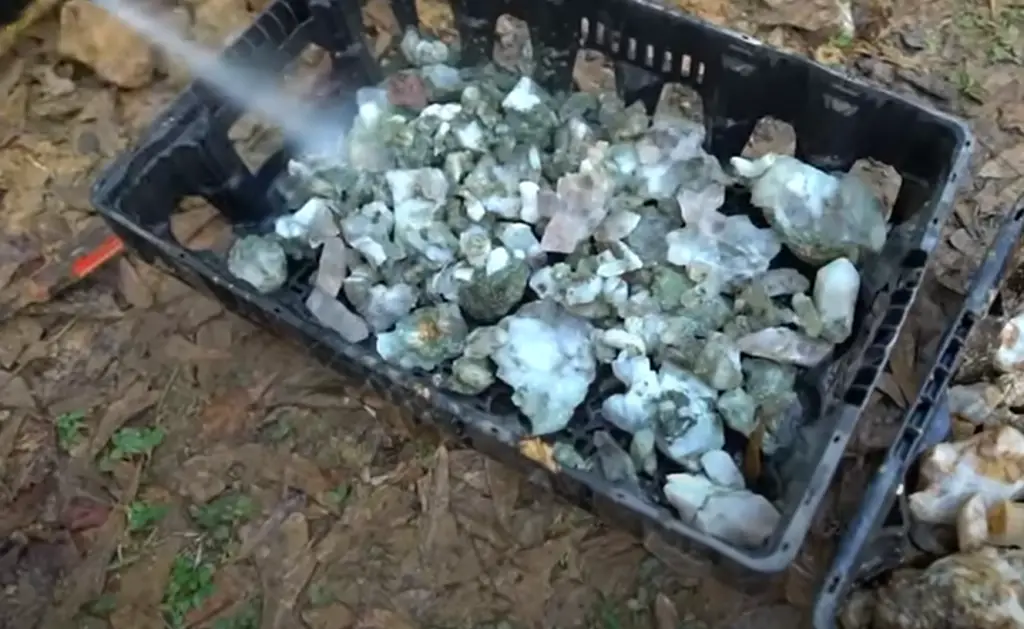
Other easy-to-find crystals include calcite (white), pyrite (fool’s gold), hematite (red), and fluorite (purple). These are all minerals that are relatively soft and can be found in many different types of rocks.
How do you know where to find crystals?
The first step is to research what types of rocks and minerals are found in your area. Once you have an idea of what kind of rocks and minerals are in your area, you can start looking for them!
Look for crystals near the water sources in your area, such as creeks, rivers, and lakes. You can also look for crystals in areas where there has been recent mining activity or construction.
How do you tell if a rock is a crystal?
The easiest way to tell if a rock is a crystal is by its shape. Most crystals have a geometric shape, such as a cube, hexagon, or octahedron. If you find a rock that has a lot of flat surfaces and angles, it’s probably a crystal.
Another way to tell if a rock is a crystal is by its hardness. Crystals are usually much harder than other rocks. If you can scratch the surface of the rock with your fingernail, it’s not likely to be a crystal.
Where is rose quartz found in nature?
Rose quartz is found in several places around the world including Brazil, India, and Madagascar. It can also be found in the United States, specifically in South Dakota.
Rose quartz has been used in jewelry for centuries and is still a popular choice today. The pink color of rose quartz makes it a perfect addition to any outfit, whether you’re dressing up or dressing down.
If you live in an area where rose quartz is known to occur, keep your eyes open when you’re out hiking or walking in nature. The rose quartz will be found near the surface of the rock. You may also find rose quartz in alluvial deposits, which are gravels that have been transported by water. You never know when you might spot a piece of rose quartz!
Useful Video: Gemstones Worth $ Millions and How to Find Them in Your Own Backyard
Conclusion
As you can see, finding crystals in your backyard is certainly possible, just takes a little effort, and some basic knowledge. You can find a lot of crystal varieties, from quartz to calcite, and even some rarer crystals if you’re lucky.
Now that you know the basics of finding crystals in your backyard, get out there and start exploring! With a little patience and some luck, you might just find the perfect crystal to add to your collection. Who knows? You might even find a rare gemstone! Whatever you find, enjoy the hunt and have fun!
References:
- https://wemowdallas.com/how-to-find-crystals-in-your-backyard/
- https://backyardscape.com/how-to-find-crystals-in-your-backyard/
- https://howtofindrocks.com/gemstones-in-your-backyard/





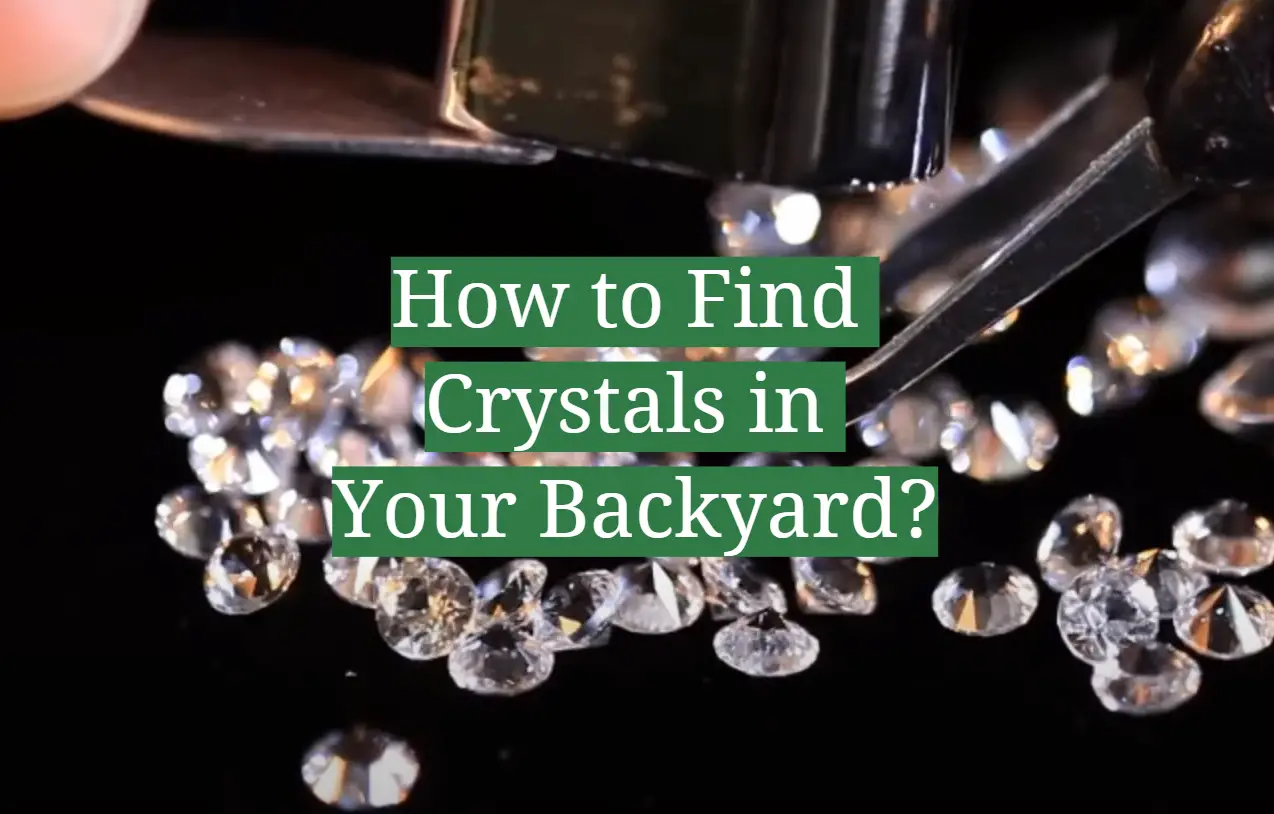
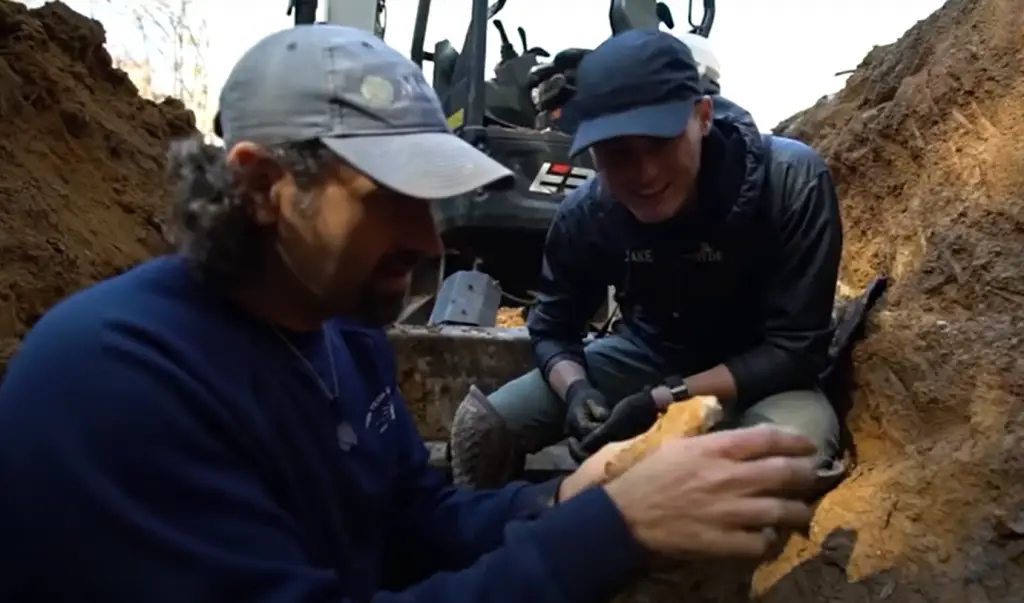




Leave a Reply
View Comments